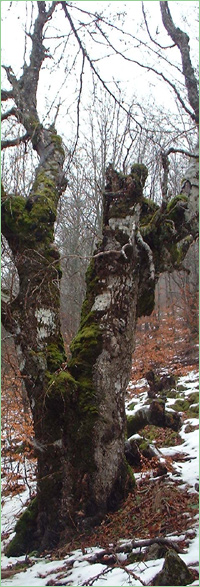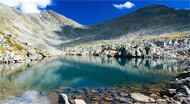Provadiisko - Royaksko plato (Unique identification code in the register: BG0002038)
Category: PZ under the Bird Directive
Area: 84031.5 hectares Location:
1.
District: Shumen, Municipality: Kaspichan, Locality: Kaspichan, Kosovo, Kyulevcha, Markovo, Mogila
2.
District: Shumen, Municipality: Shumen, Locality: Drumevo, Ilia Blaskovo, Ivanski, Kladenets, Kostena reka, Madara, Ovcharovo, Vehtovo
3.
District: Shumen, Municipality: Smyadovo, Locality: Byal bryag, Cherni vrah, Kalnovo, Novo Yankovo, Smyadovo, Yankovo, Zhelad
4.
District: Varna, Municipality: Dalgopol, Locality: Boryana, Dalgopol, Kamen dyal, Komunari, Krasimir, Medovets, Partizani, Royak, Sladka voda, Tsonevo, Velichkovo, Аrkovna, Аsparuhovo
5.
District: Varna, Municipality: Dolni chiflik, Locality: Nova Shipka
6.
District: Varna, Municipality: Provadia, Locality: Barzitsa, Blaskovo, Bozveliysko, Chayka, Cherkovna, Chernook, Dobrina, Gradinarovo, Hrabrovo, Kiten, Komarevo, Krivnya, Manastir, Nenovo, Ovchaga, Petrov dol, Provadia, Ravna, Slaveykovo, Snezhina, Staroselets, Tutrakantsi, Venchan, Zlatina
7.
District: Varna, Municipality: Vetrino, Locality: Gabarnitsa, Mlada gvardia, Neofit Rilski, Nevsha
Falls in the territory of the following Regional Inspectorates of Environment and Water (RIEW):
1.
SHumen - ul."Syedinenie" 71 et.4
2.
Varna - ul."Jan Palah" 4
Ordinance for announcement:
Ordinance No.РД-134 from 10.02.2012
2-1-2038-134-2012
Ordinance for change:
Change in the activities regime with Ordinance No.РД-73 from 28.01.2013
Record for protected zone (link):

Aims of the declaration:
1. Protection and maintenance of the habitats of the birds under item 2 to reach their favorable conservation status;
2. Restoration of the habitats of the birds under item 2, which is necessary to reach their improve the favorable conservation status.
Objects of protection (species or habitats):
1. Article 6, paragraph 1, section 3 from Biological Diversity Act: Great White Pelican (Pelecanus onocrotalus), Night Heron (Nycticorax nycticorax), Little Egret (Egretta garzetta), Black Stork (Ciconia nigra), White Stork (Ciconia ciconia), Glossy Ibis (Plegadis falcinellus), Honey Buzzard (Pernis apivorus), Black Kite (Milvus migrans), Red Kite (Milvus milvus), Egyptian Vulture (Neophron percnopterus), Short-toed Eagle (Circaetus gallicus), Marsh Harrier (Circus aeruginosus), Hen Harrier (Circus cyaneus), Pallid Harrier (Circus macrourus), Montagu's Harrier (Circus pygargus), Lesser Spotted Eagle (Aquila pomarina), Greater spotted eagle (Aquila clanga), Golden Eagle (Aquila chrysaetos), Booted Eagle (Hieraaetus pennatus), Osprey (Pandion haliaetus), Red-footed Falcon (Falco vespertinus), Merlin (Falco columbarius), Peregrine Falcon (Falco peregrinus), Corncrake (Crex crex), Common Crane (Grus grus), Stone Curlew (Burhinus oedicnemus), Eurasian Eagle-owl (Bubo bubo), Nightjar (Caprimulgus europaeus), Common Kingfisher (Alcedo atthis), European Roller (Coracias garrulus), Grey-headed Woodpecker (Picus canus), Black Woodpecker (Dryocopus martius), Middle Spotted Woodpecker (Dendrocopos medius), Calandra Lark (Melanocorypha calandra), Woodlark (Lullula arborea), Tawny Pipit (Anthus campestris), Barred Warbler (Sylvia nisoria), Red-backed Shrike (Lanius collurio), Lesser Grey Shrike (Lanius minor), Ortolan Bunting (Emberiza hortulana), Levant sparrowhawk (Accipiter brevipes), Long-legged Buzzard (Buteo rufinus), Imperial Eagle (Aquila heliaca), Syrian woodpecker (Dendrocopos syriacus), Pied Wheatear (Oenanthe pleschanka);
2. Article 6, paragraph 1, section 4 from Biological Diversity Act: Little Grebe (Tachybaptus ruficollis), Great Cormorant (Phalacrocorax carbo), Grey Heron (Ardea cinerea), Eurasian sparrowhawk (Accipiter nisus), Common Buzzard (Buteo buteo), Common Kestrel (Falco tinnunculus), Eurasian Hobby (Falco subbuteo), Little Ringed Plover (Charadrius dubius), Northern Lapwing (Vanellus vanellus), Common Sandpiper (Actitis hypoleucos), European Bee-eater (Merops apiaster), Bank Swallow (Riparia riparia), Steppe eagle (Aquila nipalensis).
Current prohibitions and regimes:
1. It is prohibited to remove landscape features (hedges, single trees and groups) in the use of agricultural land;
2. It is prohibited afforestation of pastures, meadows and land and transformating them into cultivating land and permanent crops;
3. It is prohibited to use pesticides and fertilizers in pastures;
4. It is prohibited disclosure of new and expansion of the existing quarries, pits and mines, except those for which at the date of promulgation of the arrest in the ''Official Gazette" has started proceedings under Chapter Six of the Law for Environmental Protection and / or art. 31 of the Law for Biodiversity;
5. It is prohibited to use unselected preventive for pest control in the agriculture;
6. It is prohibited mowing of meadows from the periphery to the center with fast-moving equipment before 15 July.
Overlapping (partial or full):
1.
Protected Site: Golyamata Kanara
2.
Protected Site: Golyamo I Malko Bulo
3.
Protected Site: Madarski Skalni Ventsi
4.
Protected Site: Probitiya kamak - Tsar - Borisoviya lopen
5.
Protected Site: Royashka Skala
6.
Protected Site: Slaveykova Gora
7.
Protected Site: Snezhanska Koria
8.
Protected Site: Vodenitsite
9.
PZ under the Habitat Directive: Ekokoridor Kamchia - Emine

|
|

|





